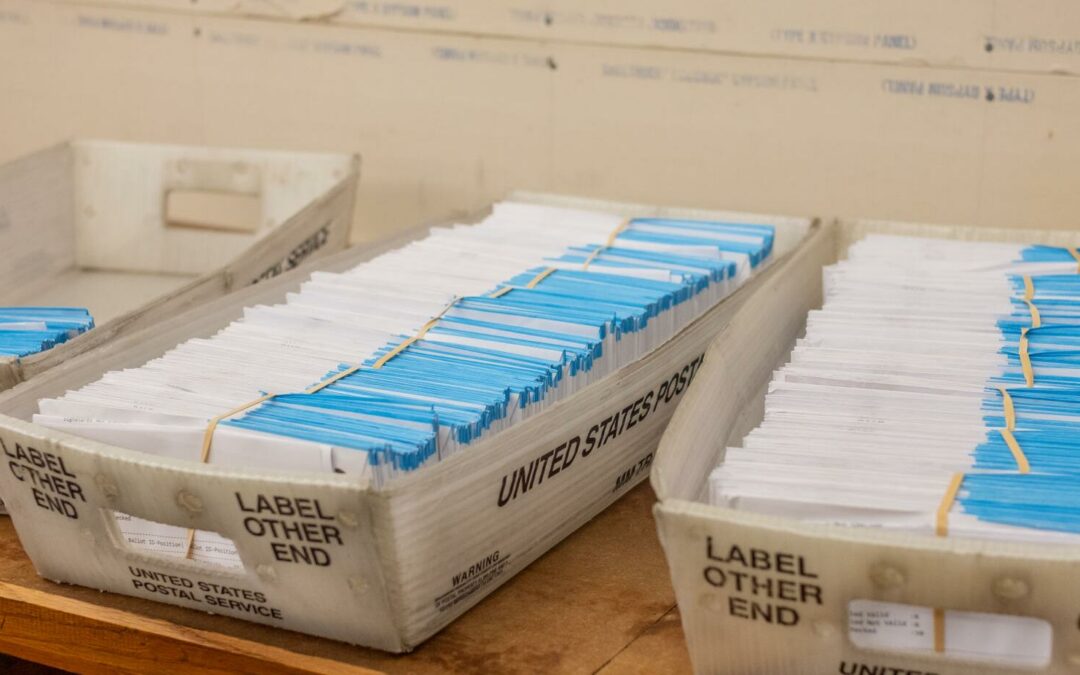
PENDLETON — Two Oregon House bills would bring ranked choice voting to the state, Umatilla County Commissioner Cindy Timmons said.
“I had a conversation about it with Administrative Services Director Dan Lonai,” she said. “It’s worrisome.”
Ranked choice allows voters to choose multiple candidates in order of preference.
“A voter selects first choice, second choice, third choice, etc. for each position,” Timmons said. “The candidate with more than 50% wins outright. If no candidate receives a majority of first-choice votes, then a new counting process begins. The candidate with the lowest numbers is eliminated and that candidate’s voters’ ballots are redistributed to their second-choice pick. In other words, if a losing candidate was ranked as a first choice, and the candidate was eliminated, then the vote still counts; it just moves to the second-choice candidate. The process continues until there is a candidate with a majority of votes.”
In the United States, the federal government and most states used the plurality system in which the candidate with the highest number of votes wins. Some states have runoffs between the two candidates who placed highest a primary out of a field of at least three continuing to run in the general election.
House Bill 2004 establishes ranked choice voting as the method for selecting winners of nomination for and election to the offices of U.S. president, U.S. senators and representatives in Congress, Oregon governor, secretary of state, treasurer and attorney general. And HB 3509 establishes ranked choice voting to select winners of nomination for and election to nonpartisan state offices and county and city positions, except where home rule charter applies, such as Umatilla County.
Controversial ranked choice voting in the 2022 general election also produced Alaska’s first Democratic U.S. representative since 1972. Rep. Mary Peltola defeated ex-governor and former Republican vice presidential candidate Sarah Palin and Nick Begich III, grandson and nephew of Democratic politicians, but running as a Republican.
Chief sponsors of HB 2004 are Rep. Dan Rayfield, D-Corvallis, Julie Fahey, D-Eugene, Rep. Lisa Reynolds, D-Portland, Rep. Pam Marsh, D-Ashland, and Sen. Janeen Sollman, D-Hillsboro. The lone sponsor of House Bill 3509 is Rep. Farrah Chaichi, D-Aloha.
Democratic Secretary of State Shemia Fagan also supports ranked choice voting, but believes Oregon isn’t ready for it yet, Timmons said.
State would get control
Timmons voiced concerns over the push for RCV in Oregon.
“Ranked choice voting takes the tally away from counties and gives it to the state,” she said. “The final tally requires central tabulation. All 36 counties really need electoral changes. More planning and financial support, plus voter education, are called for.”
Oregon has three incompatible tabulation systems, Timmons said.
“The new voter registration system takes time to get the kinks out,” she said. “The cost of the tabulation and reporting systems is an issue, as is the larger ballot. Just for Umatilla County, an election costs $37,613.”
Voter education is another expense, Timmons said.
“Ranked choice voting is very, very different than for one person,” she said. “It’s confusing. Because of the heavy political environment, adding complexity and confusion increases mistrust in the process. The commissioners are working hard toward transparency at the county level.”
If all races don’t use ranked choice voting, then the confusion would be multiplied, Timmons said.
“Adding another layer makes things worse,” she said. “It isn’t necessarily that the county and state are against it, but enacting it needs taking time and funding voter education to help people understand the rules and statutes. We need to cross every t and dot every i to be confident it could work.”
Timmons said the Umatilla County Elections Department does well and has process is open.
“How it runs is very clear,” she said. “They welcome observers. Let’s make sure it’s done right. Otherwise there will be lots of confusion.”
Umatilla County has some of the worst voter turnout in the state, often coming in last or near last out of 36 counties.
“To improve that,” Timmons said, “voters need to be confident that their vote goes to the person they want to vote for.”

Original Article: Source

